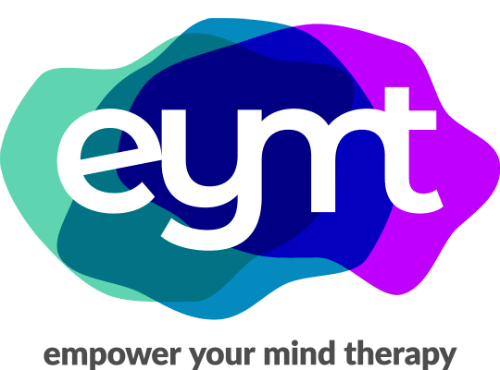Have you ever felt like you can’t trust your own thoughts? Do you think about where your thoughts and feelings come from? Sometimes, we feel like our point of view is the only one that can possibly be accurate, but that’s not always the case. We can actually learn a lot from our thoughts and feelings, but firs,t we have to understand how to separate what’s fact from what our brains tell us. When our brains tell us something that isn’t true, it can be called a cognitive distortion. Cognitive Distortion is a way in which our mind convinces us of something that isn’t true or has no real basis in reality. Today, we’ll review a list of cognitive distortions.
It’s important to remember that everything we experience is filtered through our brains. Everything we see, hear, taste, touch, and smell is information that gets sent to our brains to process. Sometimes, our brains process things correctly. Sometimes, however, our brains jump to conclusions that may or may not be accurate. These kinds of thought patterns are called cognitive distortions. These thoughts tend to reinforce assumptions that we already have, or they confirm our negative beliefs that might not be true.
For example, someone getting a test back with a failing grade on it might think, “Of course I failed, I can never get anything right.” This kind of thinking feels appropriate at the time, but these thoughts train our brains in a negative way, reinforcing beliefs that aren’t representative of reality.
Here is a list of cognitive distortions:
→ All or Nothing Thinking
→ Overgeneralizing
→ Mental Filter
→ Disqualifying the Positive
→ Jumping to Conclusions
→ Magnification and Minimization
→ Emotional Reasoning
→ Should/Must Statements
→ Personalization
So how do we begin to challenge these distorted thoughts? The first step is to simply be aware this list of cognitive distortions exist in the first place. Our natural assumption is usually that our thoughts are accurate and unbiased, but that’s not actually true. Your brain probably plays some tricks on you, just like everyone else’s. Becoming aware of the idea that there is more than just your perspective can be a helpful first step.
Why do we have cognitive distortions?
Remember, cognitive distortion is a way in which our mind convinces us of something that isn’t true or has no real basis in reality. Types of cognitive distortions include:
→ All or Nothing Thinking
→ Overgeneralizing
→ Mental Filter
→ Disqualifying the Positive
→ Jumping to Conclusions
→ Magnification and Minimization
→ Emotional Reasoning
→ Should/Must Statements
→ Personalization
One theory that researchers have suggested is that cognitive distortions developed as a way to aid survival and cope with bad experiences. These distortions may protect us in the short term, by allowing us to think whatever we need to get out of the situation, but they are usually not helpful in the long term. Cognitive Distortions also often reinforce themselves. In the example from yesterday, a person got a bad grade and assumed that they are always destined to fail.
In reality, there were probably a lot of factors that went into the grade. One bad grade doesn’t make you a failure, but this person’s brain isn’t reminding them of that. Their brain jumped right to the conclusion that they’re a failure and had no chance anyway. This line of thinking probably made the person feel better. After all, there’s nothing they could do to improve their grade if they’re destined to fail.
However, this kind of thinking takes all of the accountability off of the person. It might be hard to realize that they could have done more to get a better grade, and it’s easier to jump to the cognitive distortion that’s waiting instead of criticizing themselves. So, instead of taking a bad experience and learning from it, this person is in the same place as where they started, just with a worse grade. In this way, cognitive distortions can keep you stuck, instead of letting you improve and grow.
The first step to challenging the list of cognitive distortions is to realize that they’re there in the first place. It might be such an ingrained habit to think this way that it takes some effort to break it. In order to recognize if a thought is accurate or distorted, it’s helpful to understand some of the main types of cognitive distortions that trip people up.
Here is a common list of cognitive distortions, and what they mean:
→ All or Nothing Thinking:
This is also sometimes called polarized thinking. It basically means that you think in extremes. Instead of finding a middle ground, your thoughts automatically jump to one extreme or the other. For example, automatically categorizing everyone you meed into categories of “”good”” or “”bad”” is all or nothing thinking. In reality, most of life happens in the middle ground between these extremes, so this type of thinking isn’t helpful in the long run.
→ Overgeneralizing
Overgeneralizing is when you make assumptions about something based on one event or experience, usually without any evidence. For example, if someone cancels your plans one time, instead of realizing that it was a one-off situation, you will assume that they will cancel on all plans in the future. As you can imagine, this type of thinking is rarely helpful, because no matter how much you wish it, you can’t predict the future.
→ Mental Filter
Mental filtering is when we ignore the positive for the negative. Instead of seeing the balance between positive and negative, the negative is the only thing that matters in this cognitive distortion. This kind of negative thinking can be anxiety provoking and even exacerbate symptoms of depression.
→ Disqualifying the Positive
This one is similar to the Mental Filter cognitive distortion. In this distortion, however, we don’t ignore the positive, we just explain it away as a fluke or luck. This type of cognitive distortion can lead to feeling helpless, since it discounts all of the hard work and choices you make as being mere chance.
→ Jumping to Conclusions
This one is pretty self explanatory: this cognitive distortion is focused on making assumptions for the future. We might think we know what is going through someone’s mind (this is sometimes called Mind Reading) or what is coming in the future (predictive thinking) but usually these assumptions aren’t supported by any evidence.
→ Magnification and Minimization
Magnification is basically when we put someone up on a pedestal. We focus too deeply on someone’s positive qualities while ignoring anything negative. It is often accompanied by minimizing your own positive qualities and contributions. This minimization of your own accomplishments can lead to self-esteem issues down the line.
→ Emotional Reasoning
Emotional reasoning is when we use our current mood to figure out what’s going on around us. Instead of processing what is going on in a neutral way, we filter everything through the emotions we’re feeling in the moment. With this distortion, your mood dictates how you relate to the world.
→ Should/Must Statements
This cognitive distortion is all about putting pressure on yourself. You punish yourself for not doing more, and you hold yourself up to unreasonable standards that you can never reach, so you always let yourself down.
→ Personalization
Do you blame yourself for everything, all the time? This cognitive distortion gives you the idea that everything is your fault, even if you had no influence on how things turned out. Constantly blaming yourself for everything can leave you feeling like a victim and feeling stuck.
“The primary cause of unhappiness is never the situation, but your thoughts about it. Be aware of the thoughts you are thinking.” – Eckhart Tolle





